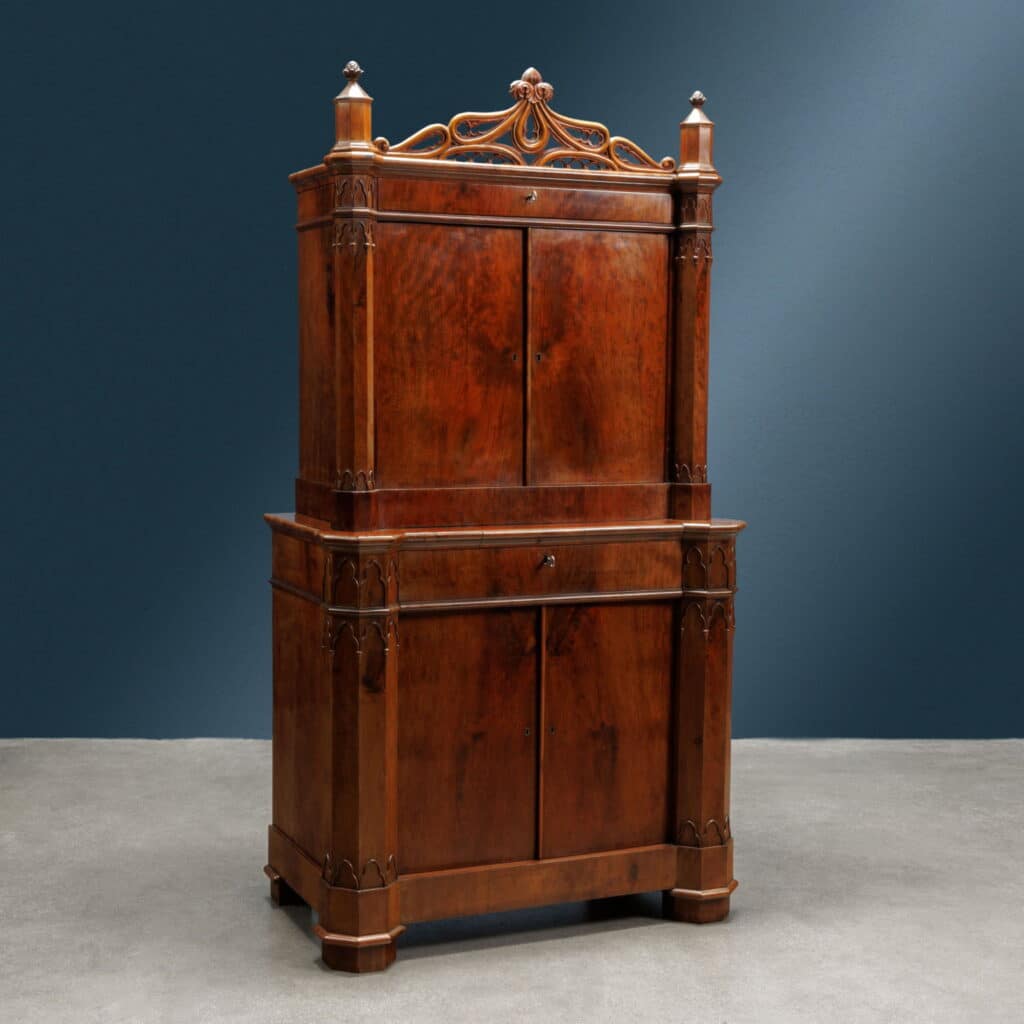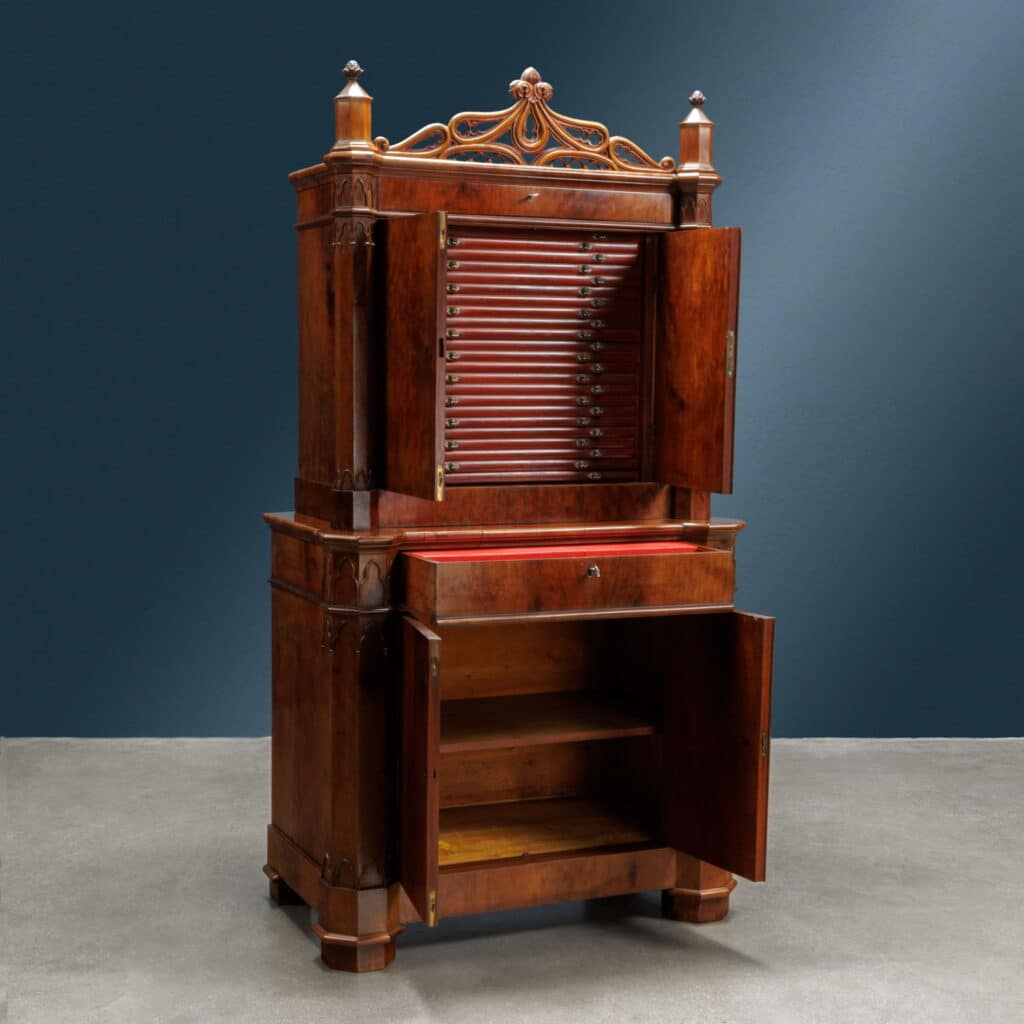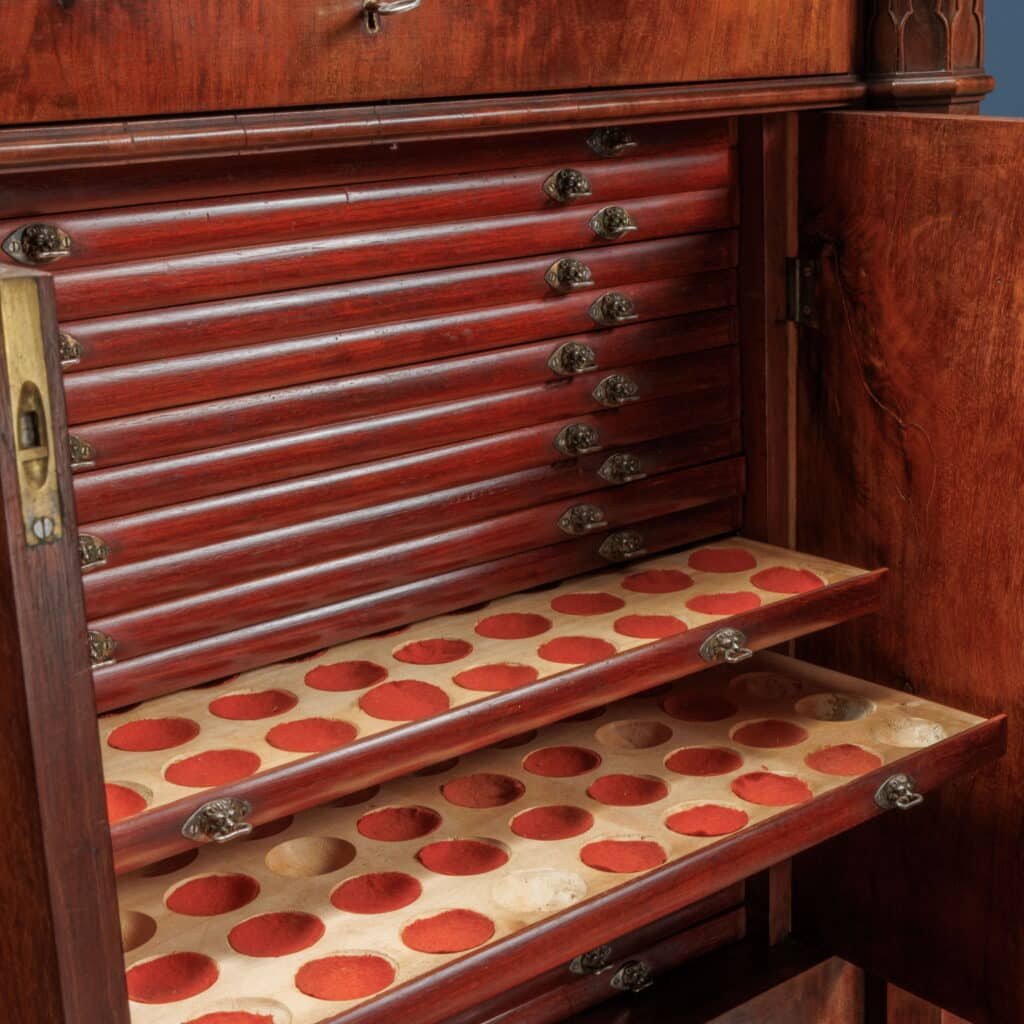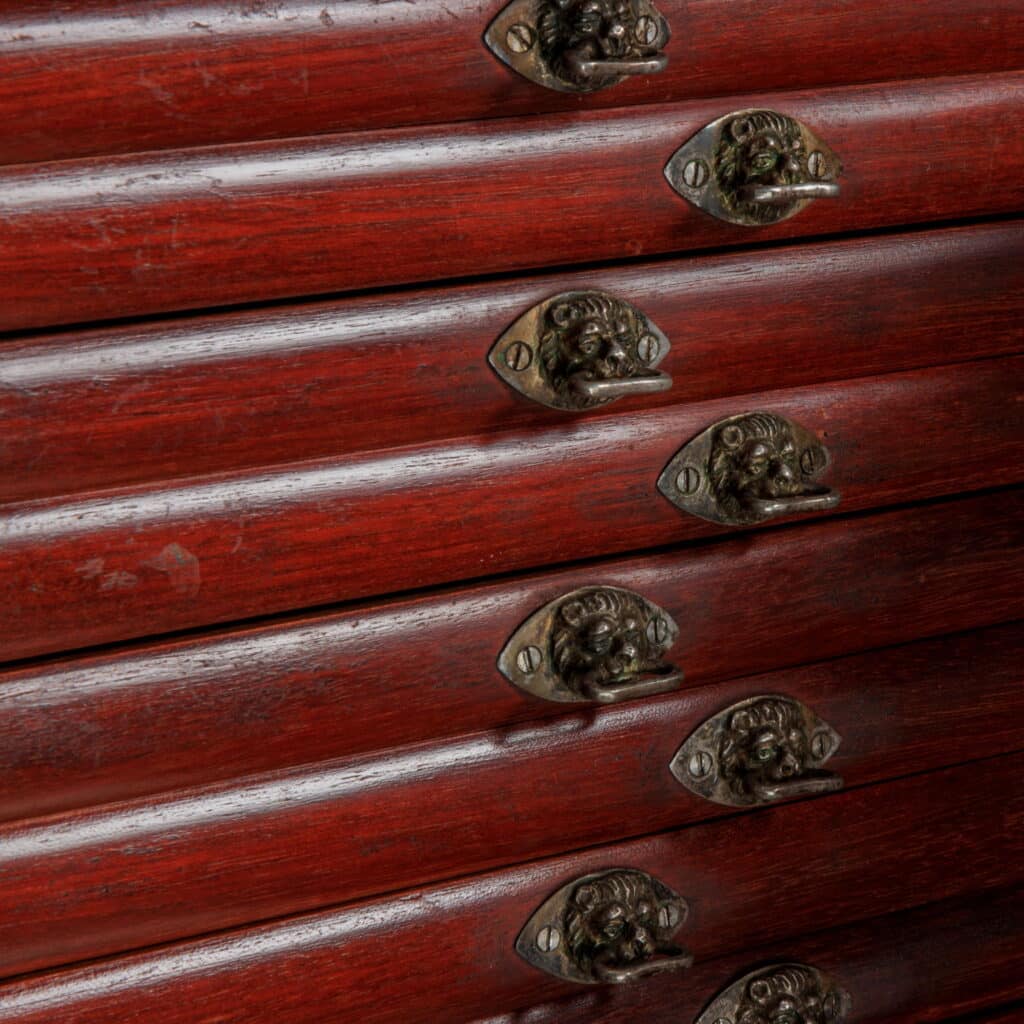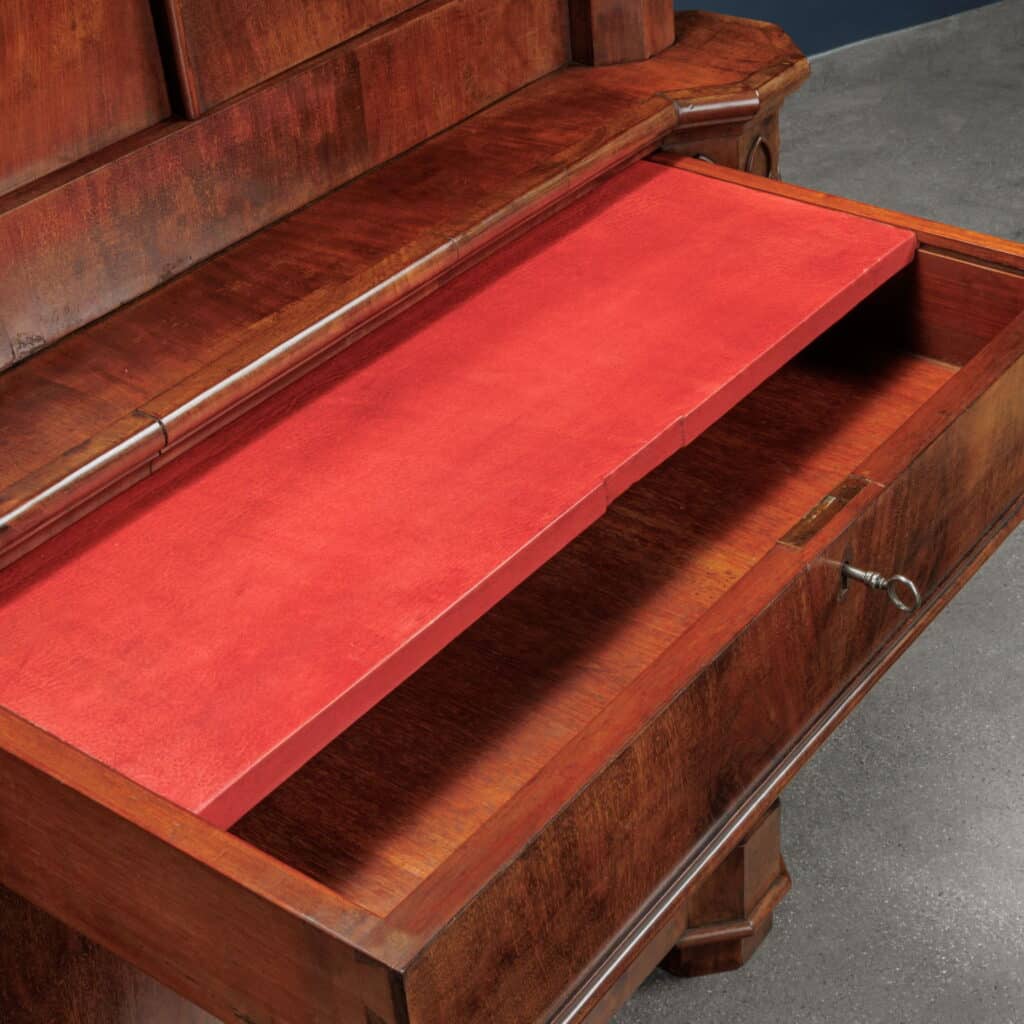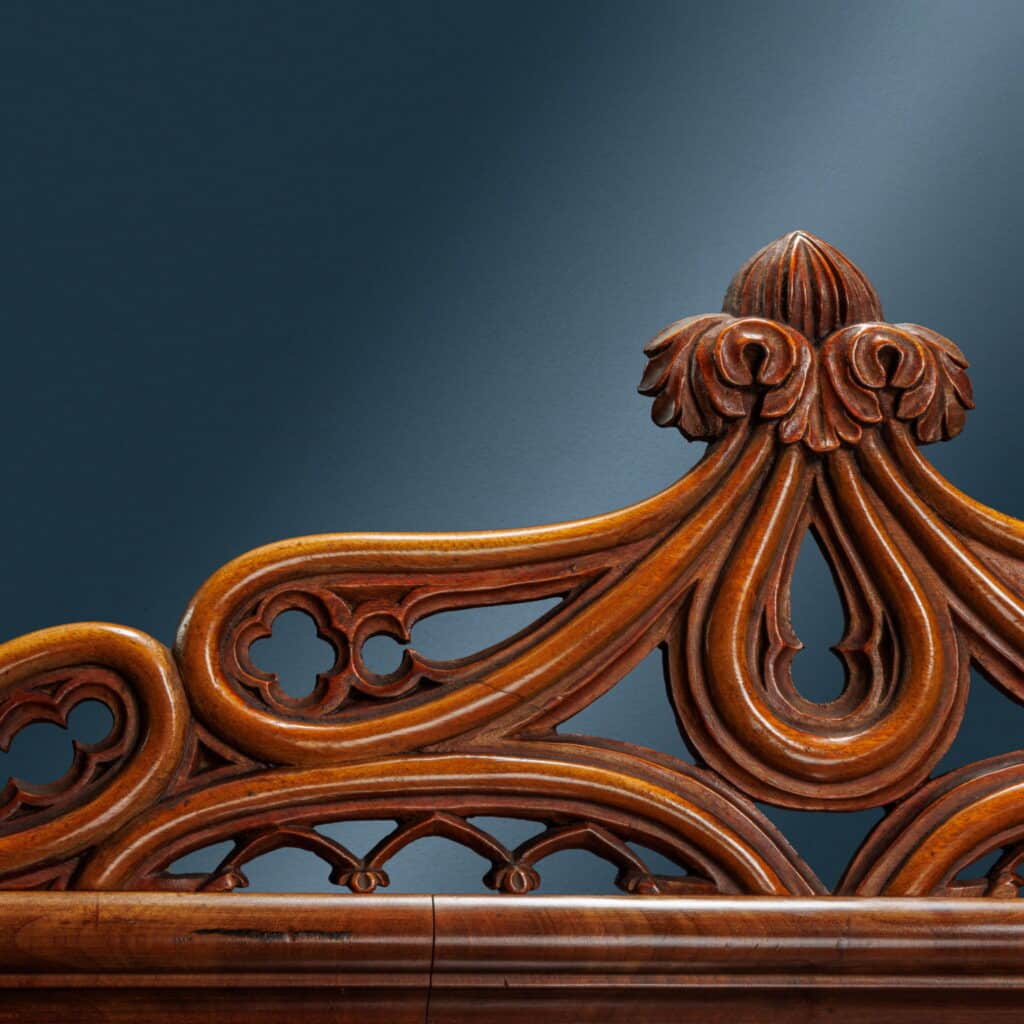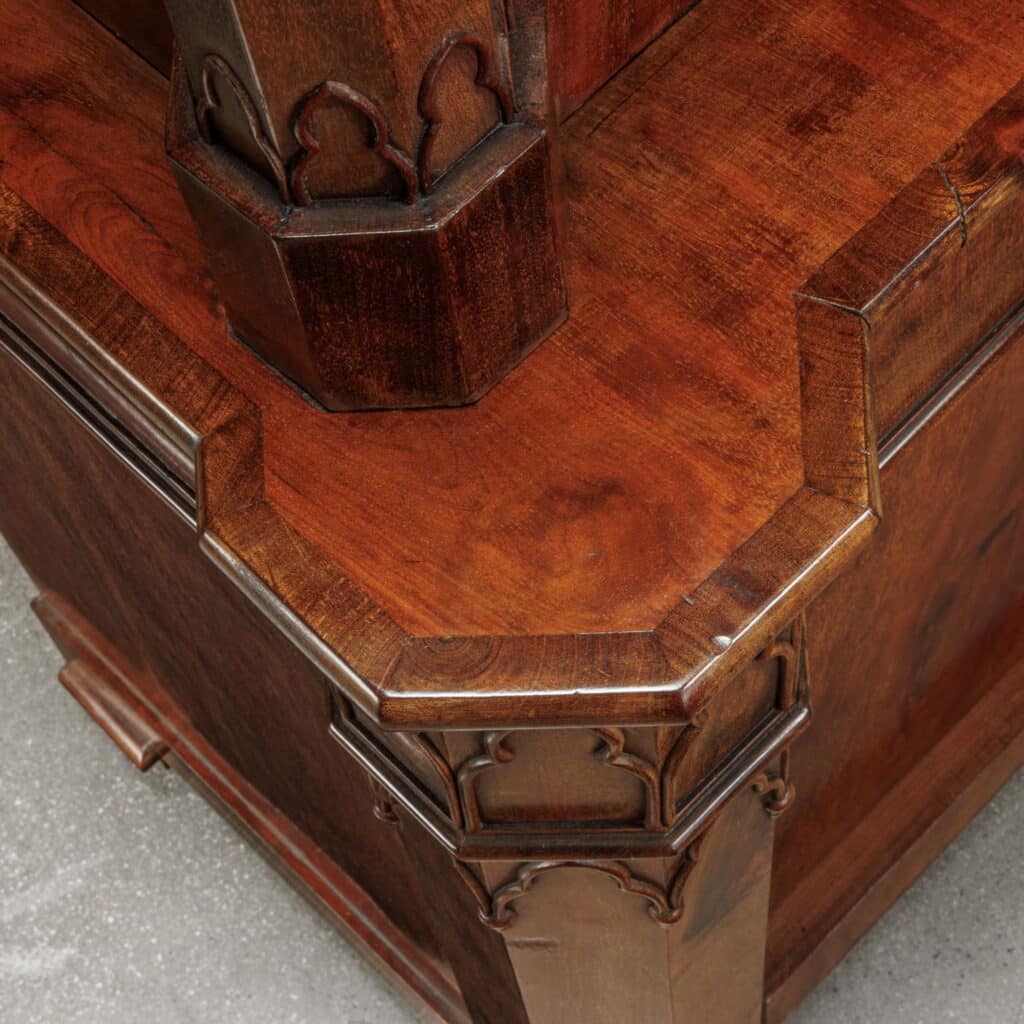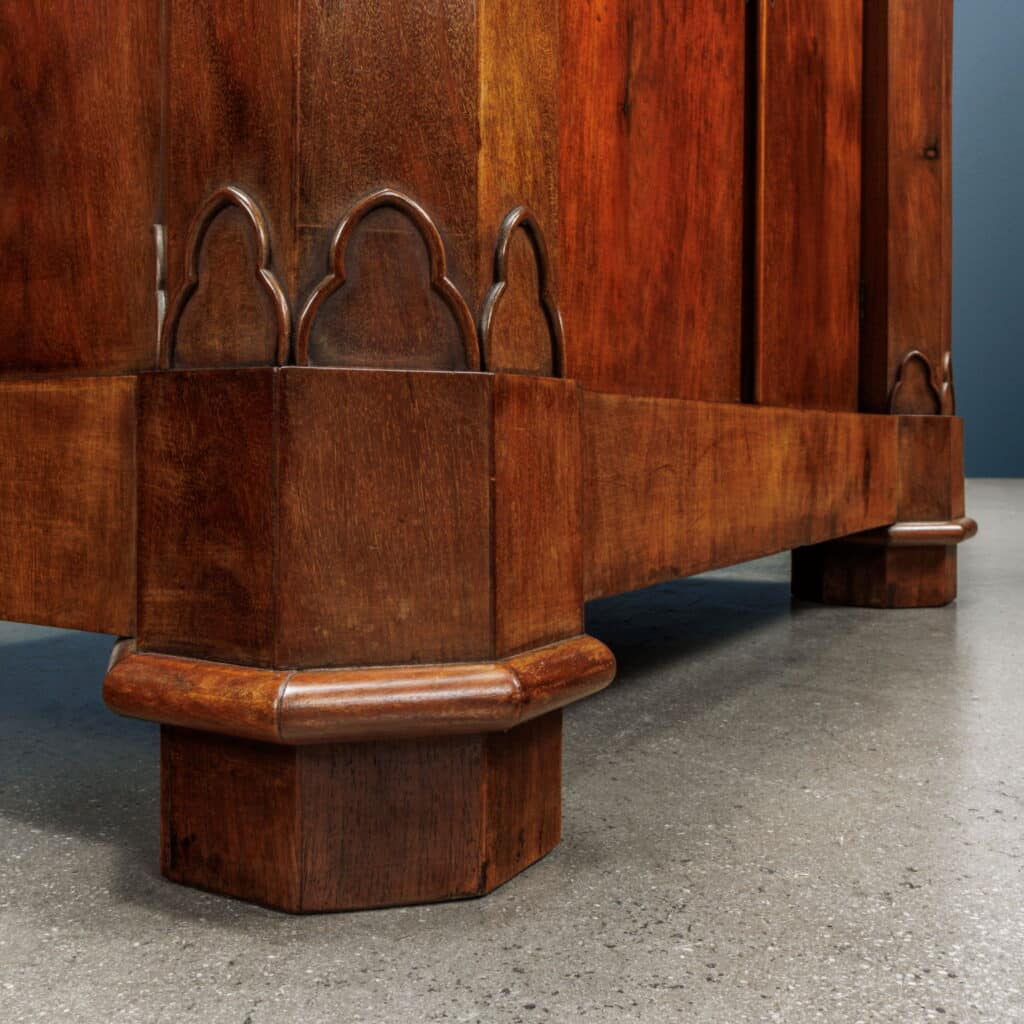Coin cabinet. Piedmont, second quarter of the 19th century
Description:
Two-body cabinet completely veneered in mahogany feather; both in the narrower upper part and in the lower part, it has two doors surmounted by a drawer and framed by a pair of uprights with an octagonal base.
The uprights are enriched with carvings with pointed arches in Gothic style, as is the cymatium with openwork three-lancet windows and two pine cone-carved pinnacles in the same style. The lower drawer contains a leather-covered drawer that acts as a desk; the opening of the two drawers allows, thanks to a release mechanism, the opening of the doors. The lower ones hide shelves, while in the doors of the riser there are twenty-two maple drawers with slots for the coins, some still have the piece of velvet on which to place them; the pulls have a mahogany front with two knobs each in the shape of a silver lion’s protome. The construction is in fir and pine, the hardware finished in brass.
Dimensions: 167 x 88 x 50.5 cm.
CODE: ANMOCR0190534
Historical-stylistic analysis:
The nineteenth century was a century of collectors and this is certainly a piece of furniture created to contain a collection presumably of coins. Our furniture can be framed in the neo-Gothic artistic movement, which developed in Europe during the second quarter of the 19th century, with the aim of re-evaluating medieval art and in particular Gothic architecture.
In Italy the most interesting example of this current is represented by Racconigi’s Margaria project. In this Savoy residence Pelagio Palagi created a rural architectural complex in neo-Gothic style, designed the architecture, the gate, the ecclesiastical vestments and a series of exceptional furnishings made mostly by Gabriele Capello, court cabinetmaker, who worked on the furnishings of this palace with the support of the Genoese Henry Thomas Peters.
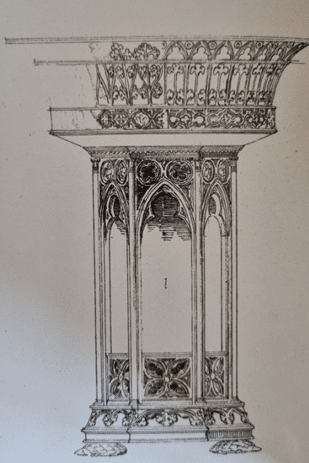

Pelagio Pelagi created the drawings of a group of furnishings designed for the Queen’s Reposoir, including a large table, two high chairs, eight taborettes, two Jardinières, together with a kneeler and a confessional dating back to 1846, located in the chapel of the complex. He insisted on the closeness of the neo-Gothic decoration between the piece of furniture described here and the furnishings of this complex.
We do not have documents that certify with certainty the origin of this furniture. However, the proximity of the decorative taste combined with the technical expertise required in the creation of this piece of furniture, built with an uncommon quality of materials, lead us to place it in that environment if not in the same workshops working alongside Pelagi.

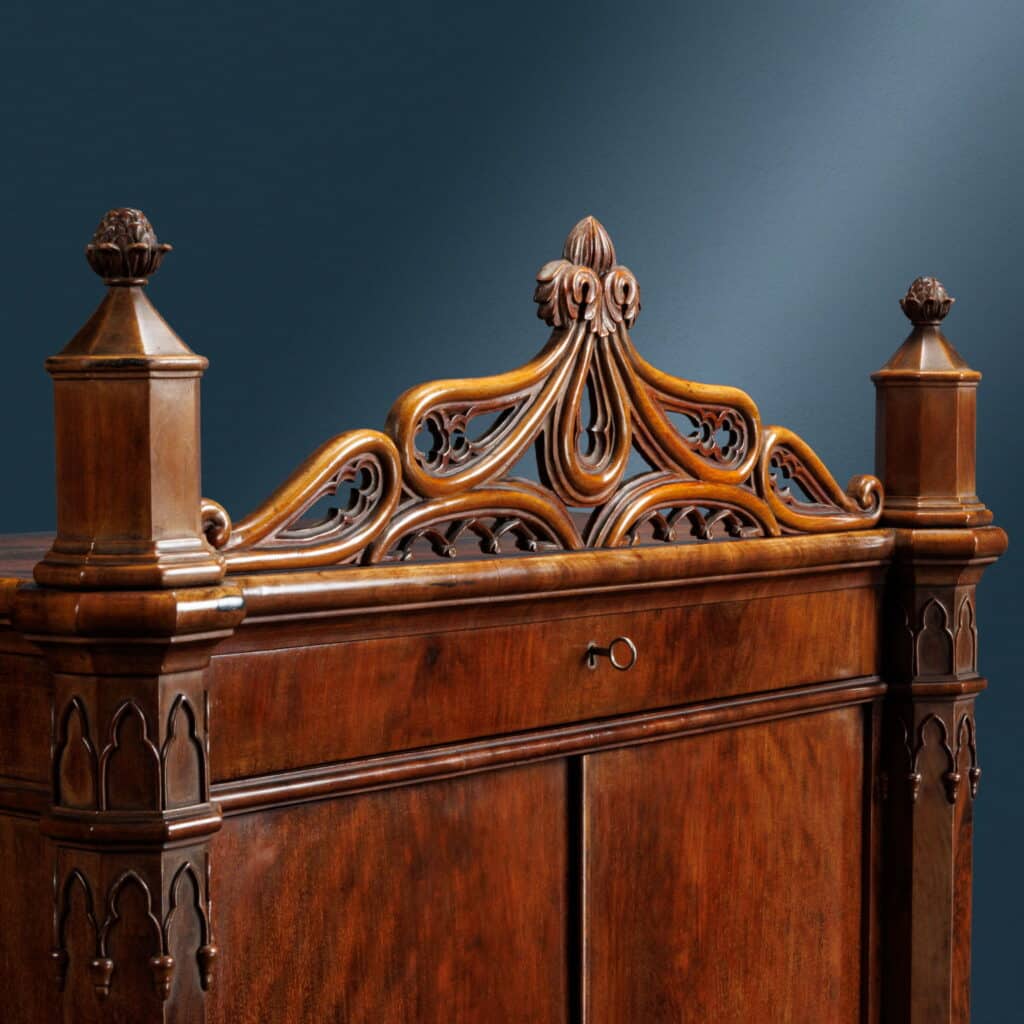
Comparative bibliography:
Antonetto R., Gabriele Capello «Moncalvo», Ebanista di due re, Torino, Umberto Allemandi & C., 2004, Figg. 26-34 e 36-37.
- Coin cabinet. Piedmont, second quarter of the 19th century

Antiques, Art and Design
FineArt is the new ambitious Di Mano in Mano project that offers an exclusive choice of antiques and design works, presenting them for their singularity and uniqueness.

